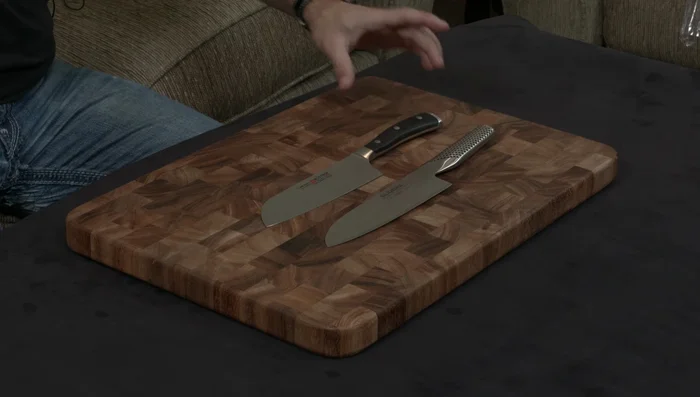Choosing the right Santoku knife can be a daunting task, especially when faced with top contenders like the Wüsthof Ikon and the Global G48. Both knives are renowned for their exceptional quality, precision forging, and impressive performance, making a direct comparison essential. This showdown delves into the key features and differences between these two culinary powerhouses, offering a detailed analysis to help you make an informed decision. We'll explore their blade composition, grind angles, handle designs, and overall weight, highlighting the subtle yet significant nuances that set them apart.Ultimately, the best knife depends on individual preferences and cutting styles. This in-depth comparison will examine the advantages and disadvantages of each, comparing their edge retention, comfort, balance, and overall handling. Whether you prioritize a heavier, more substantial feel or prefer a lighter, more agile knife, this review provides the necessary information to help you select the perfect Santoku for your kitchen. Prepare to discover which knife reigns supreme in this head-to-head battle.
Pros And Cons
- Ergonomic handle designed for various grips
- Full tang with extra weight at the bottom for balanced feel
- Feels like an extension of the arm
- Lifetime warranty
- Lightweight and nimble
- Surprisingly ergonomic
- Dimples on handle increase grip
- Lifetime warranty
- No full tang (constructed from two separate pieces welded together)
Read more: 10 Best Ceramic Sushi Knives: Ultimate Guide
Blade Material and Construction
Both the Wüsthof Ikon and Global G48 Santoku knives are forged and boast impressive features. The Ikon uses a proprietary steel blend achieving approximately 58 Rockwell hardness, while the Global utilizes a chrome-molybdenum vanadium steel (CrMoV) also around 56-58 Rockwell. This similarity in steel composition translates to comparable edge retention and sharpening frequency.

The Ikon is made in Germany, and the Global is crafted in Japan. Despite the differing origins, both manufacturers prioritize high-quality materials resulting in knives built to last. Their similar hardness ratings suggest comparable performance in terms of durability and wear resistance.

Blade Geometry and Angle
Both knives feature a hollow grind, enhancing their slicing capabilities. The Global boasts a 15-degree angle per side, while the Ikon has a slightly sharper 14-degree angle. This minor difference in angle impacts the sharpness and slicing performance; however, both remain very similar.

The subtle difference in blade angles creates only a minor variation in cutting characteristics. For practical use, the distinction is negligible, with both knives delivering exceptionally sharp and clean cuts.

Handle Design and Ergonomics
The Ikon's handle is ergonomically designed to accommodate various grip styles. It is heavier at the bottom, facilitating a balanced and comfortable feel in the hand. This weighted design aims to make the knife an extension of the user's arm.

In contrast, the Global's handle is a separate piece welded to the forged blade and filled with sand. This construction results in a lighter, more nimble feel. Despite its minimalist design, the Global features dimples that enhance grip.

Full Tang Construction
The Wüsthof Ikon has a full tang construction with additional weight towards the end of the handle, offering excellent balance and control. This design contributes to the knife's overall heft and comfortable feel in the hand, minimizing hand fatigue during extended use.

The Global, conversely, does not have a full tang but instead a two-piece construction where the blade is forged separately from the handle, which is then welded on. While this process results in a lighter knife, it is important to note the design difference.

Conclusion and Recommendation
Both the Wüsthof Ikon and Global G48 Santoku knives are excellent choices with lifetime warranties. The decision ultimately comes down to personal preference regarding handle design and weight. The Ikon provides a heavier, more substantial feel with superior ergonomics for some users. The Global is lighter and more nimble, favored by those who prefer a lighter knife.

If you appreciate a heavier, more robust knife with excellent balance, the Ikon is the superior option. If you prefer a lighter, faster-handling knife, the Global is a fantastic choice. Both knives offer exceptional cutting performance due to their similar blade materials and angles.

